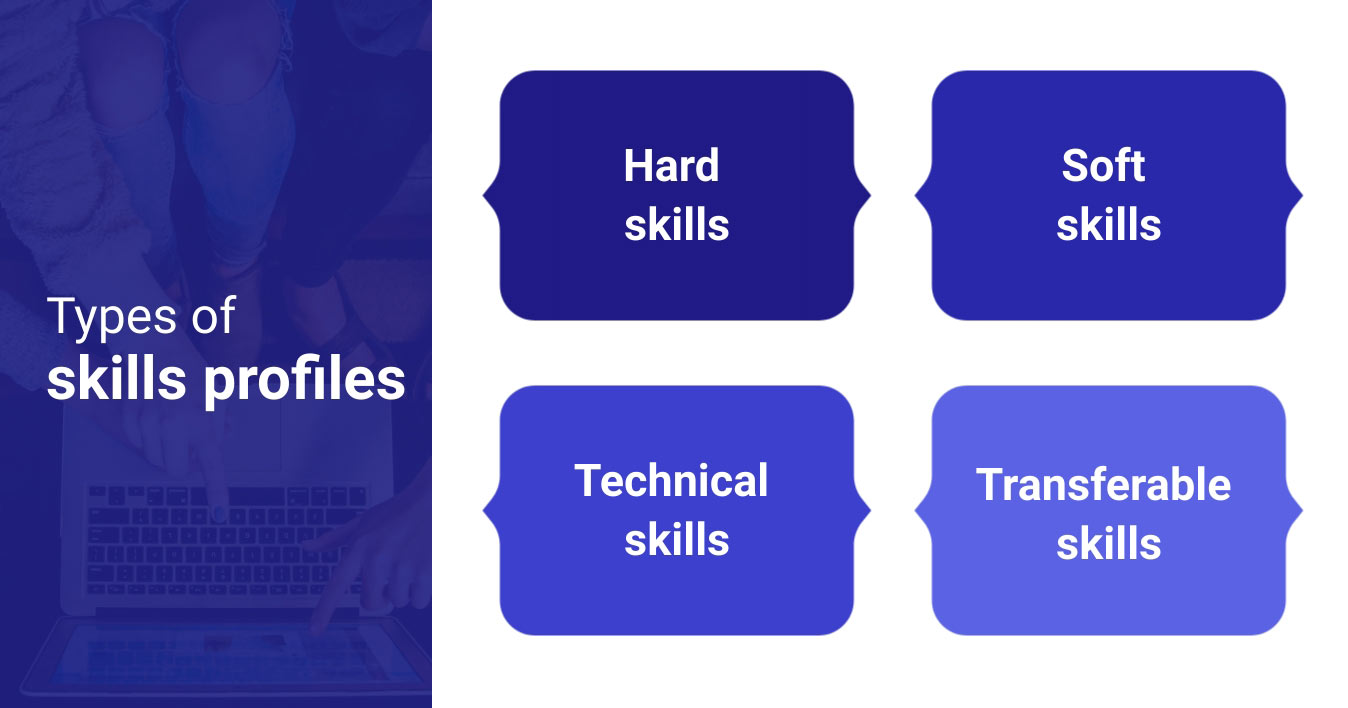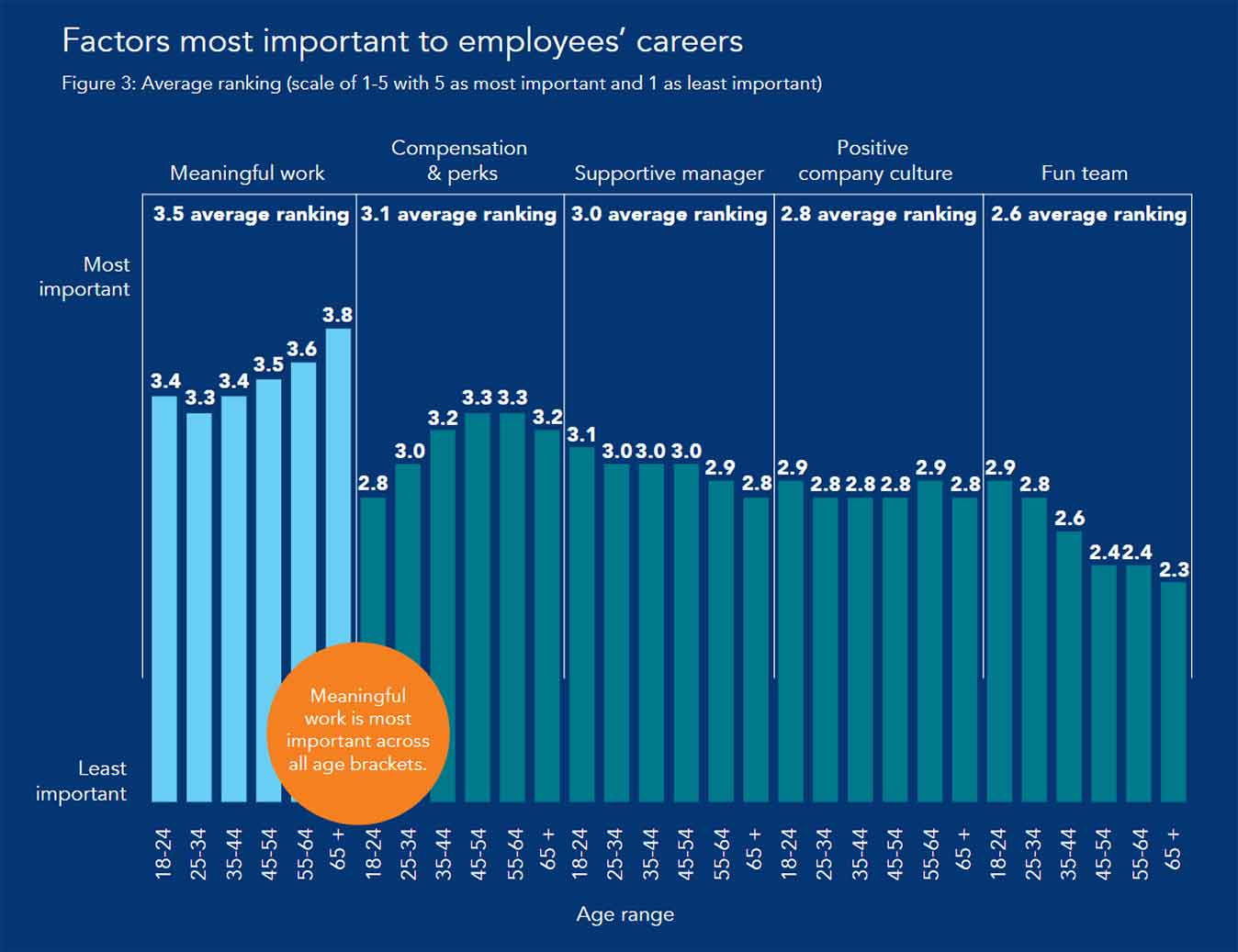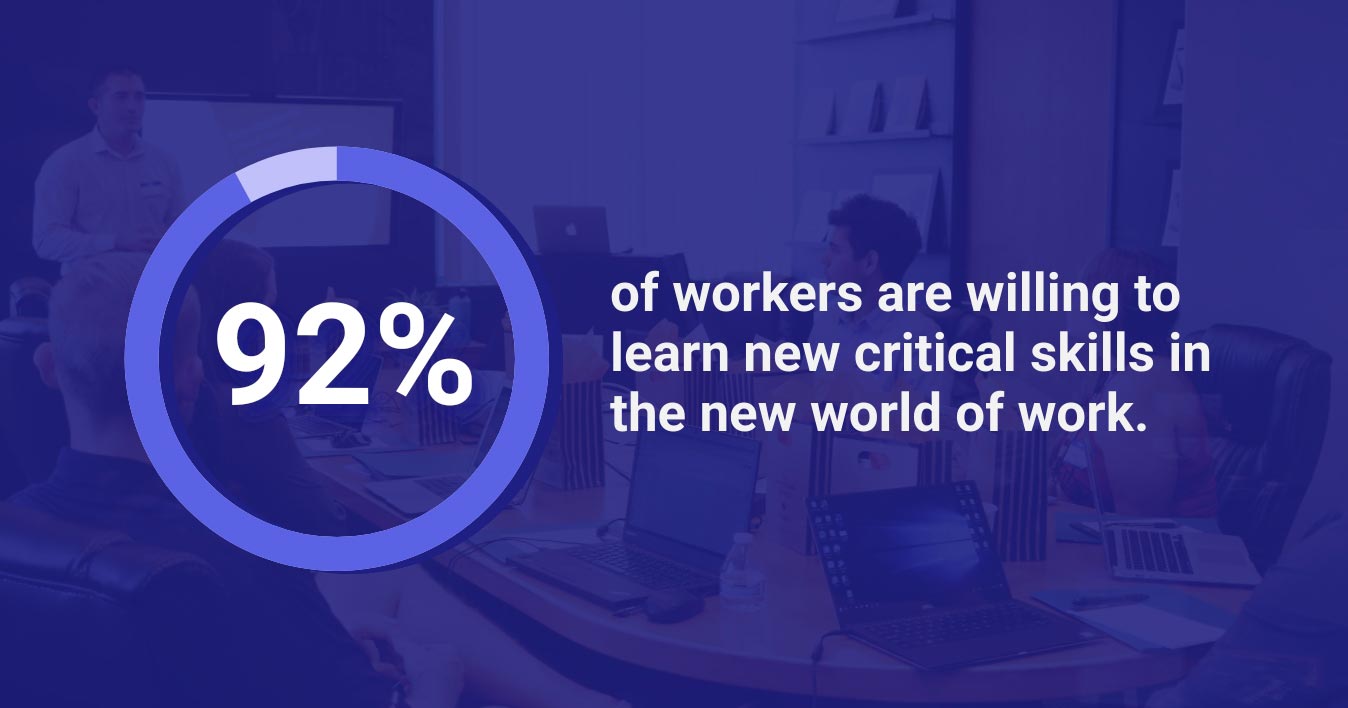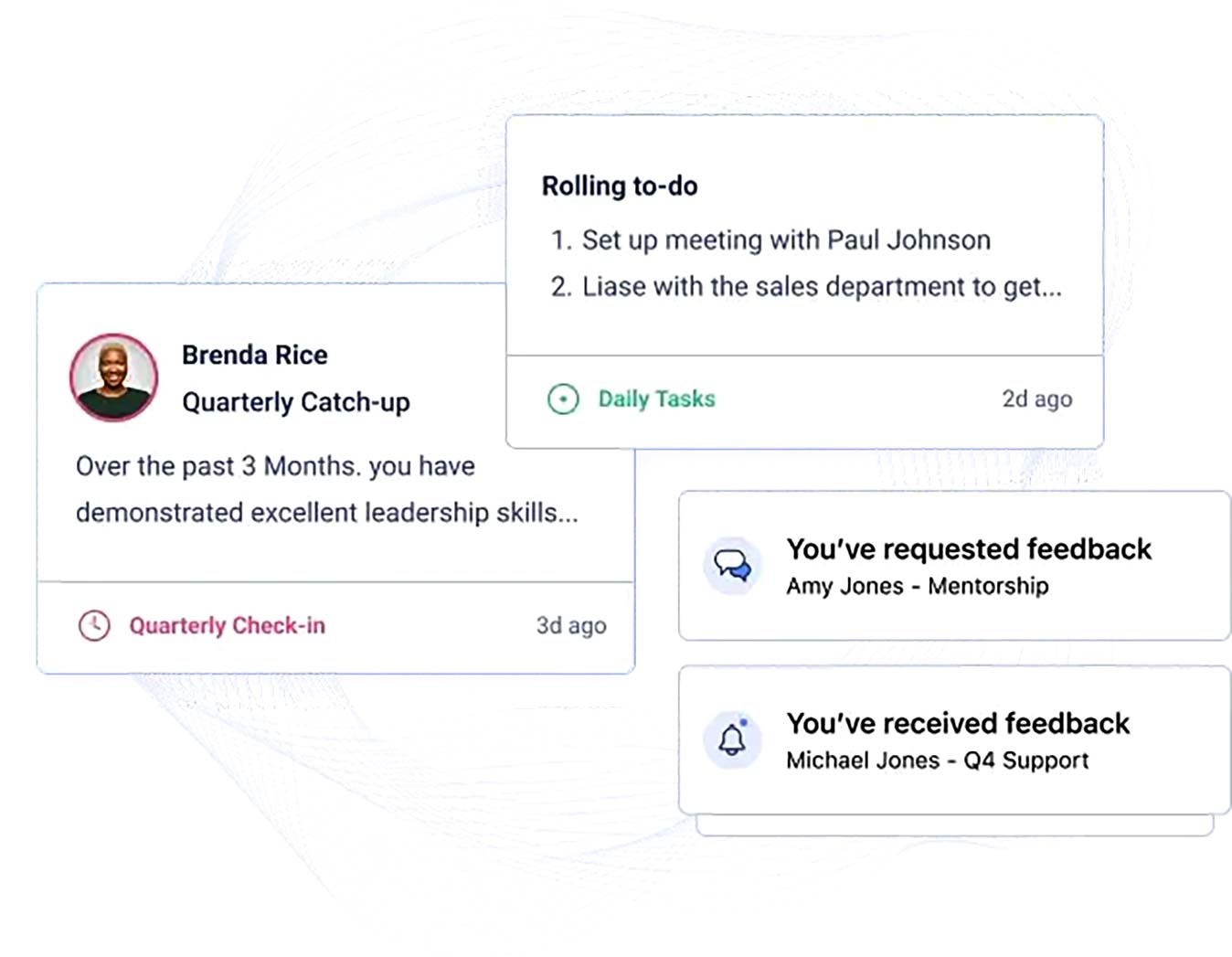What is a Skills Profile and Why Do They Matter?
When it comes to talent acquisition, understanding the full spectrum of a candidate’s abilities is paramount for any hiring manager.
A skills profile isn’t just a resume component—it’s a strategic tool that showcases a candidate’s competencies, going beyond traditional qualifications to spotlight how they can immediately contribute to your organization.
As employers, it’s vital to encourage and assess the clarity of these profiles and ensure that the skills listed closely align with the needs of the position and the culture of your company.
Let’s explore how a well-constructed skills profile can be your guide to identifying candidates who are skilled and the right fit for advancing the goals of your organization.
What is a skills profile?
A skills profile is a holistic representation of a candidate’s professional skills, each designated with a specific value or proficiency level. These skills distinctly emphasize their abilities beyond mere work history and academic background.
The main objective in creating skills profiles is to offer a comprehensive overview of the competencies required for successful performance in a particular role. This assists organizations in aligning the ideal candidate with the appropriate position by ensuring that employees possess the essential skills to fulfill the organization's objectives and needs.
A typical profile often illuminates a candidate's varied skill sets, including:
- Hard skills: Measurable and teachable abilities specific to certain tasks, such as coding or bookkeeping.
- Soft skills: Interpersonal capabilities that enhance teamwork and communication.
- Technical skills: Specialized knowledge in areas like IT or engineering, which are crucial for specific roles.
- Transferable skills: Versatile abilities such as problem-solving and adaptability are applicable across different job roles.

Why are skills profiles important?
Utilizing skills profiles within the skills marketplace is crucial for your organization for several reasons, each contributing to enhanced operational efficiency, strategic human resource management, and overall organizational success. Here’s a detailed look at why skills profiles are so valuable.
Enhanced talent management
Recruitment and hiring
Skills profiles help organizations identify the specific skills and competencies required for different roles.
This clarity supports the recruitment process by enabling HR teams to match candidates more accurately with job requirements. It ensures that new hires are well-suited for their roles, reducing the likelihood of mismatches and turnover.
Skills profiles also help with internal mobility. They ensure qualified internal candidates aren’t overlooked by providing a detailed and structured overview of their competencies and achievements.
Considering meaningful work ranks as the most important factor in employees’ careers across all age brackets, identifying the right role for employees based on their skill sets is essential for organizational success.

The future of work is human! Set the path for a brighter future of work with a human-centric approach. Learn about the findings from the Workhuma® analytics & research institute survey. Click the link to download the report now!
Employee development
Skills profiles provide a clear roadmap for employee development. By understanding the current skill levels of employees and comparing them to the desired skills for their roles or career aspirations, organizations can more effectively tailor training and development programs.
This is key because according to the Human Workplace Index—Workhuman’s monthly survey of 1,000 full-time U.S. workers—92% of employees are eager to learn new skills for success as part of their job.

This targeted approach optimizes training budgets and boosts employee satisfaction and retention by actively supporting career growth.
Pro tip: Through , employees can create priorities around a particular skill, gather feedback on their growth from their colleagues, and ultimately receive recognition for learning.
Brauchen Sie Hilfe beim Feedback einholen? 👉 Endecken Sie Conversations®!
Strategic workforce planning
Gap analysis
Skills profiles enable organizations to conduct a comprehensive skills gap analysis.
By comparing the skills currently available within the workforce to those needed to achieve business goals, companies can identify critical skill gaps and take proactive steps to address them, whether through hiring, training, or strategic shifts in team composition.
Succession planning
Effective succession planning relies on a clear understanding of the skills and competencies required for critical roles within the organization.
Skills profiles help identify potential internal candidates who already possess or are developing the necessary skills, facilitating smoother transitions and continuity in key positions.
Improved organizational agility
Adaptability to change
In rapidly changing markets, organizational agility is a significant competitive advantage. Skills profiles help organizations quickly reallocate resources based on shifting business needs.
Understanding the skills within the workforce allows for dynamic team configurations that can more effectively respond to new challenges and opportunities.
Innovation and problem-solving
Organizations with a clear understanding of their employees' skills can foster innovation by strategically assembling teams based on complementary skills. This approach enhances problem-solving capabilities and drives innovation as diverse skills and perspectives converge.
Enhanced performance management
Objective assessments
Skills profiles provide a framework for more objective performance evaluations. Managers can assess performance based on clearly defined skill requirements and proficiency levels, leading to fairer and more productive performance reviews.
Alignment with organizational goals
By aligning individual skills with organizational goals, companies can ensure that every employee’s efforts contribute optimally to the company’s objectives. This alignment helps in maximizing productivity and achieving strategic goals more efficiently.
Cost efficiency
Optimized Resource Allocation
Understanding the skills distribution within an organization allows for optimized resource allocation. Organizations can avoid overspending on unnecessary training and allocate human resources where they are most needed, enhancing operational efficiency and reducing waste.
In essence, skills profiles are a foundational tool in modern human resource management. They support strategic decision-making across various HR functions—from hiring and training to performance management and succession planning.
By leveraging detailed insights into the skills and capabilities of your workforce, you can enhance your organization’s adaptability, drive innovation, and maintain a competitive edge in your industry.
How to create a skills profile
Creating skills profiles is a strategic process that serves individuals and organizations by aligning personal capabilities with job demands. Here's how you and your employees can develop effective skills profiles to align capabilities and strengths with job requirements.
Step 1: Identify key skills
Begin by pinpointing the critical skills necessary for a certain position or career path. This should encompass hard skills and soft skills.
Utilize a job analysis to extract this information, examining the duties of the job and the characteristics of successful incumbents.
Step 2: Categorize skills
Arrange the identified skills into pertinent categories such as technical skills, leadership skills, communication skills, and problem-solving skills. This will help with the clarity of the skills profile.
Step 3: Define proficiency levels
Assign varying levels of proficiency—beginner, intermediate, advanced, and expert—to each skill. This classification aids in evaluating the current skill level and identifying growth potential.
Step 4: Self-Assessment
Encourage individuals to perform a self-assessment to gauge their proficiency levels in each skill. This can be achieved through self-rating scales or recounting instances where the skill was effectively utilized in past roles.
Step 5: Third-Party assessment
Incorporate evaluations from third parties such as supervisors, colleagues, or mentors to provide an unbiased assessment of the individual's skills. This multi-source feedback contributes to a more precise skills profile.

Step 6: Documenting achievements and evidence
Document specific achievements or projects that exemplify the skills listed. This could include case studies, descriptions of significant projects, or notable accomplishments that demonstrate skill application.
For instance, cite how your project management skills resulted in successful project completion under budget. This adds a layer of credibility and gives context to your capabilities.
Step 7: Certifications and endorsements
If you have any certifications or endorsements, include them here. Whether it's a certification in a particular software or an endorsement from a previous employer, these can serve as proof of your skill and experience.
Step 8: Update regularly
Remember, a skills profile is a dynamic document. It should be regularly updated to reflect new skills acquired or enhancements to existing ones. Frequent revisions ensure the profile remains current and representative of the individual’s capabilities.
Step 9: Use technology
Leverage digital platforms or software designed to support the creation and maintenance of skills profiles. These technologies often provide templates, instructional support, and streamlined options for updating and sharing the profile online.
Step 10: Align with career goals
Ensure the skills profile aligns with the individual's career objectives and aspirations. This alignment is crucial for pinpointing developmental needs and planning future educational or training endeavors.
Step 11: Professional presentation and structure
Ensure the skills profile is professionally formatted. It should be clear, concise, and well-structured. Some formatting tips include:
- Bold for categories
- Bullet points for skills
- Tables for proficiency levels
- Italics for personal titles or roles
Strategically organize your skills profile on your resume to align with the job description, making it easy for employers to see your value.
By adhering to these steps, you can construct a thorough and impactful skills profile that highlights an individual's abilities, facilitates career progression, and creates effective job placement strategies.
FAQ
What is the best way to present a skills profile within a resume?
The best way to present a skills profile within a resume is by creating a dedicated skills section that catches recruiters' attention. List your most pertinent qualifications here, using precise terminology that matches the language in the job listing, ensuring clarity and relevance.
How can employees' skills profiles be structured for HR purposes?
For HR purposes, employees' skills profiles should be structured to facilitate easy scanning and should align with the company's competency framework. They should clearly categorize skills and include proficiency levels to help HR quickly match candidates with job requirements.
Conclusion
In the rapidly evolving world of work, a well-crafted skills profile is more than just a list of abilities—it's a powerful tool for aligning your talent with organizational needs.
By embracing comprehensive skills profiles, you can ensure you have the right people in the right roles, driving personal growth and business success.
Leverage this strategic approach to meet today’s demands and prepare for the future, fostering a culture of continuous learning and development that propels your organization forward.
About the author
Ryan Stoltz
Ryan is a search marketing manager and content strategist at Workhuman where he writes on the next evolution of the workplace. Outside of the workplace, he's a diehard 49ers fan, comedy junkie, and has trouble avoiding sweets on a nightly basis.